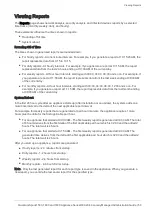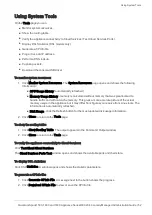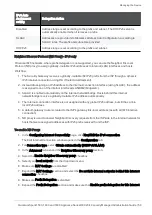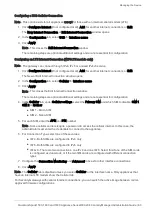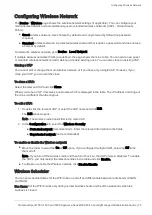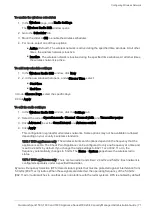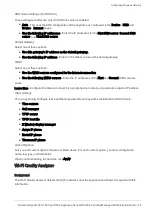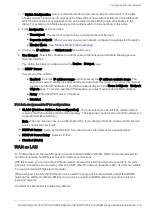
Managing the Device
Quantum Spark 1500, 1600 and 1800 Appliance Series R80.20.40 Locally Managed Administration Guide | 64
The image contains files used to configure the module for use with specific carriers. Multiple images can be
stored on the device. During a firmware upgrade, you can add images packages to the module or replace an
image with a newer version.
Note – You can only switch to an image already uploaded to the module.
The image package contains these files:
n
Firmware file – Contains the module's firmware.
n
Carrier Configuration file (the Product Release Information or PRI) – Contains custom settings for a
specific carrier and is linked internally to a specific firmware file.
The module runs an active image which contains a single uncompressed copy of a firmware file and a single
configuration file.
To see a list of available carriers and their image packages, go
n
EM7455 – Global region
n
EM7430 – APAC region
Use cases:
Some carriers require the module to run a specific carrier configuration file, and may also request this for the
certification process. In addition, the carrier configuration file ensures the use of carrier-specific parameters
when you register with that carrier.
To select an active image for a SIM:
1. In
Device
>
Internet
, double click an existing cellular connection, or select the connection and click
Edit
. You can also click
New
to create a new cellular connection.
The
Edit Internet Connection
window opens.
2. In the
Cellular
tab, for each SIM, select the new
Carrier configuration package
from the list of
supported image package names. Each SIM can have a different carrier.
Note
– This list dynamic, based on the valid installed packages on the modem.
3. Click
Apply
.
On the
Internet
page, the
Status
changes to
Connecting
with the message:
Switching carrier configuration package. This may take a few minutes.
To disable image switching:
In the
Cellular
tab, for each SIM, select
None
for the Carrier configuration package.
For PPPoE over ATM over VDSL/ADSL or IPoE over ATM over VDSL/ADSL or for an ADSL interface:
Enter the
VPI number
and
VCI number
you received from your service provider, and the
Encapsulation
type
(LLC or VC_MUX).
For WAN/DMZ interfaces and static, DHCP, PPPoE, PPTP, and L2TP connection types
Or
For VDSL/ADSL interfaces and IPoE - dynamic IP and IPoE - static IP connection types over PTM:
n
Use connection as VLAN
- Select this checkbox to add a virtual Internet interface.
n
VLAN ID
- Enter a VLAN ID between 1 and 4094.

